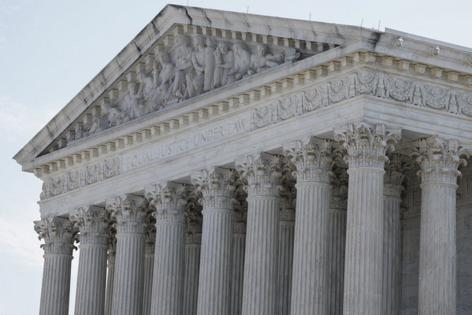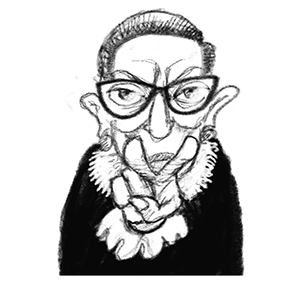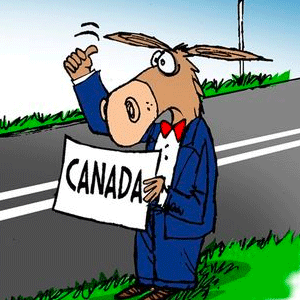Louisiana redistricting case could change the rules nationwide
Published in Political News
WASHINGTON — The Supreme Court set the stage for a potential earthquake in redistricting across the country in its next term after setting new rules for a court fight over Louisiana’s congressional map.
The order Friday, which set the legal question for the state and map challengers to answer, comes after years of litigation around the Voting Rights Act, which requires states to provide minority communities with an opportunity to elect the candidates of their choice, and the Constitution’s ban on racial discrimination.
The court fight could result in yet another map for Louisiana and change the rules for redistricting nationwide.
The justices asked the state and two sets of challengers to argue over “Whether the State’s intentional creation of a second majority-minority congressional district violates the 14th or 15th Amendments to the U.S. Constitution.”
Friday’s order starts the briefing for the court fight’s second trip through oral arguments. During the last term, the justices heard arguments in a narrower version of the case before opting not to decide the issue in June.
Experts said Friday’s order focused on broader issues than the original case, which concerned arguments around whether the state violated the Voting Rights Act and how much “breathing room” states should have between the mandates of the VRA and the prohibition on racial gerrymandering in the Constitution.
Justin Levitt, a law professor at Loyola Marymount University who served as the White House senior policy adviser for democracy and voting rights, said the Supreme Court could use the case to drastically alter how the courts consider race in redistricting.
“There is no question that it has set the table with a range of options all the way from ‘status quo, never mind,’ to profoundly, radically change like 150 years worth of cases,” Levitt said.
Levitt pointed out that the order Friday was broader than the original case, which the justices declined to address in the first trip through oral arguments.
“The court apparently desperately wants to wrestle with some thornier issues that I think have been resolved and are probably, but not definitely, going to stay resolved,” Levitt said.
Louisiana’s congressional map has now been in litigation for the past four years. The state first adopted a congressional map after the 2020 census that included one Black-majority congressional district.
Then a group of voters and voting rights groups successfully challenged the map and obtained a federal court order that the map likely violated the VRA. State legislators then adopted the current map, which contains a second Black-majority district.
A group of self-identified “non-African American voters” launched their own challenge to the state’s map, arguing that this time it violated the Constitution by prioritizing race.
Steve Schwinn, a law professor at the University of Illinois Chicago, said the case “could potentially seriously threaten another part of the Voting Rights Act,” along with other decisions in recent years.
The case will be the third in four years addressing major questions around race and redistricting.
Two years ago the justices upheld a lower court order requiring Alabama to draw a congressional map with a second Black-opportunity district under the VRA. Last year the court overturned a lower court order finding that legislators discriminated against Black voters when drawing a South Carolina district currently held by Republican Rep. Nancy Mace.
Schwinn said the outcome of the case could depend on how many justices are ready to upset the current status quo around race and redistricting.
Taking a maximalist approach, like stating that any district drawn with race in mind is unconstitutional, “really would eviscerate a key function of Section 2 of the Voting Rights Act that has existed since 1982 and effectively overturn years of cases,” Schwinn said.
Schwinn said two justices would be key to watch: Chief Justice John G. Roberts and Justice Brett M. Kavanaugh. The two voted with the court’s Democratic appointees to uphold the Alabama map, and either could flip his vote in the Louisiana case.
Kareem Crayton, vice president of the Brennan Center for Justice’s office in Washington, D.C., pointed out that statutes such as the VRA and the principle of “one person, one vote” were meant to preserve an individual’s right to vote.
“As we talk about districts and power, and all of those things are a part of the story, but all this is supposed to stem from the ability of an individual citizen to exercise their power and their preferences to say who represents them,” Crayton said.
Crayton pointed out that the case comes “in the middle of a rather contentious moment when people are answering the invitation to use partisanship to the hilt and designing and redesigning districts.”
Texas is in the middle of a special legislative session to redraw its congressional map for stated Republican gains, and other state leaders nationwide have discussed the possibility of such middecade redistricting.
Experts have said that court fights over redistricting can shape the House majority, as so few seats are in play. Some of the states with hard-fought redistricting battles, such as Texas and Florida, face frequent fights over alleged racial discrimination under the VRA.
The cases are Louisiana v. Phillip Callais, et al. and Press Robinson, et al., v. Phillip Callais, et al.
©2025 CQ-Roll Call, Inc., All Rights Reserved. Visit cqrollcall.com. Distributed by Tribune Content Agency, LLC.

























































Comments